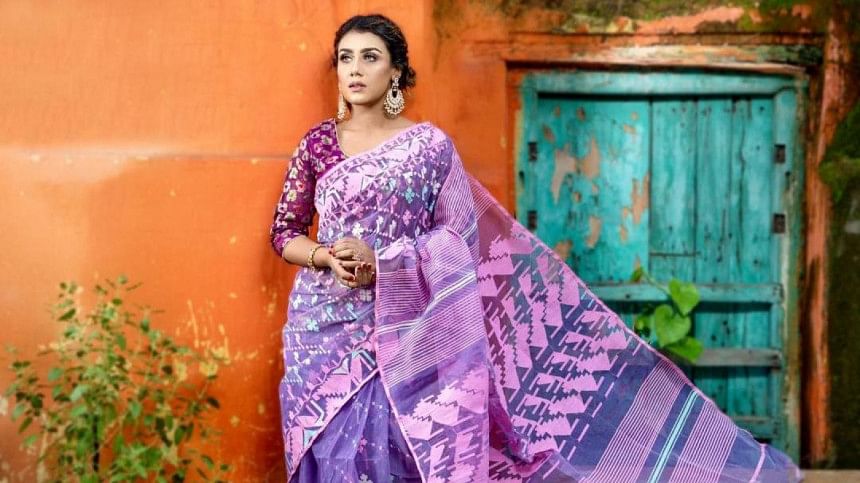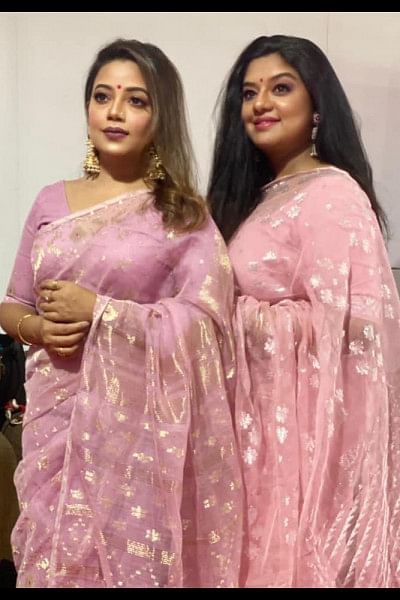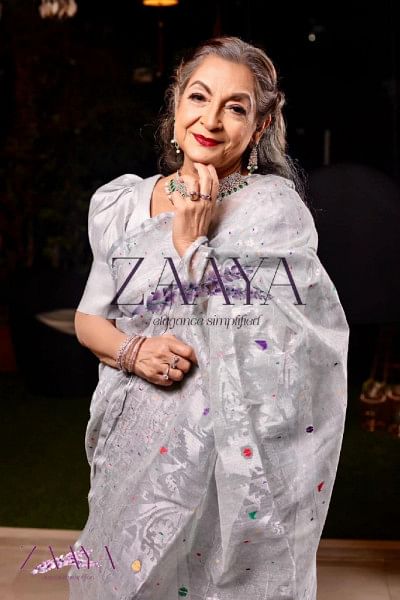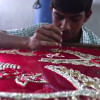Mastering the Jamdani trade with Zaaya

Almost every week at Star Lifestyle, we have some involvement with the regal Jamdani – it may be that the boss is showing off her latest purchase to her minions or that a subordinate is contemplating a piece way above her pay-grade, which usually ends up into scribbled poetic lines meant for print.
Maybe today is just another unfortunate day of the subordinate. Jokes apart!
We truly are obsessed with the Jamdani and believe that the world needs to be aware of its intricacies and the exclusiveness of the craft. "It is definitely a pride for Bangladesh," said Shahrukh Chowdhury Lina, owner and founder of Zaaya, a fashion house that particularly deals with Jamdani saris.
Zaaya became quite popular after people watched REKKA, starring the gorgeous Azmeri Haque Badhon. Her saris became a cult favourite after the airing of the web-series, early this year. People from both the Bengals have their heads spinning over the flawless Dhakai fabric and wished to know more of the designer brand, involved with the creation of the exquisite wardrobe.

"Zaaya has always been a favourite with the Bangladeshi media personalities," endorsed both Elita Karim, singer and journalist, and Azmeri Haque Badhon, artiste and famous media personality, from Dhaka.
As we speak to the entrepreneur over a cup of coffee, she is at her chirpy best and makes it a point to give us thorough knowledge on the ways of the trade. "The business of the Jamdani isn't easy at all, you know! I don't know why people assume otherwise," confessed Lina.
As we spoke of the pandemic and its aftereffects, particularly on the small and medium enterprises, Lina focused on the trade of Jamdani. "Some people think the process is very easy. Well! It's actually quite the opposite. We must contact a mohajon first and give them a certain amount of salami, around Tk 25000 to Tk 500000 in advance to book a particular artisan and his apprentice. Afterwards, the artisan must also be paid on a weekly basis (dadon) as long as he keeps on working under a particular banner. Besides the exclusivity of the craftsmanship, the salary and the payment procedure causes the end product to be more expensive than what is usually perceived," revealed the entrepreneur.
In times when people can get fake Jamdani saris in a price as low as Tk 2500, the Tk one lac versions may seem decadent. To this statement, Akhter only frets a little bit more. "Of course! The swindlers, who are mostly middlemen, are on the verge of ruining the business and the exclusivity of the craft.
"They fraud the customers with awfully low counts and machine-made fabrics which cannot be considered even as a twin to the regal Jamdani. These are 'fakes' and there's no better word to define the counterfeit products."
The natural question that came up next was how to help people recognise between a fake and the real version. "Its' very easy," said Lina."

She added on to explain, "You must always go to a proper Jamdani House in town; they will show you the difference between the counts, the difference between the threads and the complexities of the detailing in the motifs. Once someone is satisfied, they are walked through the entire process and encouraged to select a design and style that suits them every way, including their budget."
Our conversation with the entrepreneur had certainly been an eye-opener, because Lina made it very clear that while Jamdani saris were the end result of an exquisite craftsmanship, the process of buying it was no less of an art itself.
"When you buy a Jamal Ahmed or a Shahabuddin, don't you go through the details of it?
Don't you spend a considerable time doing research to validate your purchase? It's the same with the Jamdani. Each and every sari is a piece of art and people must display their passion before making the purchase – Be respectful of the craft, be more knowledgeable about the product and passionate towards the craftsmanship . And the best piece will be yours."
We certainly believe Lina's final words rounded up our Jamdani tutelage, accurately.

 For all latest news, follow The Daily Star's Google News channel.
For all latest news, follow The Daily Star's Google News channel. 








Comments